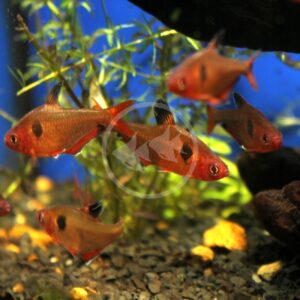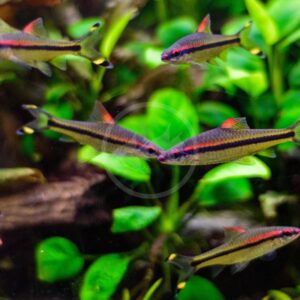
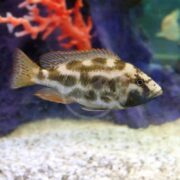
CICHLID – HAP BLUE DOLPHIN
Cyrtocara moorii
$12.99 – $19.99Price range: $12.99 through $19.99
The Hap Blue Dolphin Cichlid is endemic throughout Lake Malawi in shallow waters of both rocky and soft substrates, but exact population numbers are unknown because it doesn’t seem to be encountered frequently. Both sexes of Hap blue dolphin look similar, with an overall vibrant blue body and as they mature, both sexes develop the characteristic nuchal hump on their forehead. On average, male Hap blue dolphins will grow larger than females [10″]. A gentle giant among the Malawi cichlids, Hap blue dolphins will do best when kept with several individuals of their own kind and with not overly boisterous tank mates. This species is also known to be quite flighty, so aquarium decor should be selected carefully as to avoid accidental injury.
Care Level: Moderate
Temperament: Semi-Aggressive
Live Plant Safe: No
General Description: The Hap Blue Dolphin Cichlid is endemic throughout Lake Malawi in shallow waters of both rocky and soft substrates, but exact population numbers are unknown because it doesn’t seem to be encountered frequently. This fish is often referred to as a ‘Hap’ because it is within the tribe of African cichlids known as Haplochromines. Both sexes of Hap blue dolphin look similar, with an overall vibrant blue body and as they mature, both sexes develop the characteristic nuchal hump on their forehead. On average, male Hap blue dolphins will grow larger than females [10″]. A gentle giant among the Malawi cichlids, Hap blue dolphins will do best when kept with several individuals of their own kind and with not overly boisterous tank mates. This species is also known to be quite flighty, so aquarium decor should be selected carefully as to avoid accidential injury.
Diet Requirements: Hap blue dolphins, in nature, are micropredators. A diet made up of various high quality proteins are ideal such as frozen brine shrimp, bloodworms, and chopped prawns. Earthworms are a favorite treat. Hap blue dolphins will accept large sinking pellet foods and flake foods, but these should not make up a large portion of the diet. Variety is the spice of life in order to maintain color, immune function and longevity of your fish.
Care Requirements: An established minimum 75 gallon aquarium is ideal for a group of small Hap blue dolphin. Biweekly water changes are encouraged to keep water parameters up to standard (Nitrates < 30 ppm). The aquarium should be aquascaped sparingly with no jagged items that a Hap blue dolphin could injury themselves on. A sandy or fine substrate is preferred and the aquarium needs to be well oxygenated. African cichlid specific substrates, or even marine Aragonite substrate, are great choices because they will buffer the pH and alkalinity to levels characteristic of Lake Malawi. Hap blue dolphins should be kept with more docile Malawian and Tanganyikan fish of a more “community” type set-up. Recommended water conditions, 74-80° F, KH 10-25, pH 7.5-8.5.
Purchase Size: Medium: 2” to 2-1/2”; Large: 2-3/4” to 4”
Note: Your item may not look identical to the image provided due to variation within species. Purchase sizes are approximate.
Dry goods orders are shipped via US Postal Service or UPS to the address provided at checkout based on the selection made in your website shopping cart. Product is carefully packed to help prevent any damage during shipping. Once processed you will receive a shipment notification via email with tracking number, and delivery notification. Please allow 48 hours for processing after your order is placed.
Perishable items (i.e. live plants, refrigerated/frozen foods) are shipped via US Postal Service 2-3 day to the address provided at checkout for a $25.00 flat rate charge. Items are packed with secure packing material and heat, cold, or Cryo packs as needed to maintain safe temperatures during transit. If one or more perishable items are in the shopping cart at checkout the $25.00 perishable shipping charge will automatically appear and need to be selected. Once processed you will receive a shipment notification via email with tracking number. Please allow 48 hours for processing after your order is placed.
Livestock (i.e. fish, invertebrates, coral) are shipped via UPS Overnight to the address provided at checkout for a $55.00 flat rate charge. Livestock is packed in insulated styrofoam boxes with secure packing material and heat, cold, or Cryo packs as needed to maintain safe temperatures during transit. If one or more livestock items are in the shopping cart at checkout the $55.00 livestock shipping charge will automatically appear and need to be selected. Livestock is shipped Monday through Wednesday ONLY (no weekend delivery is available) weather permitting, and we reserve the right to delay shipping until conditions are appropriate for safe arrival. Once your order is placed we will contact you to arrange the best shipping date based on these criteria. Someone must be available to receive the livestock order on the first delivery attempt. Once processed you will receive a shipment notification via email with tracking number. Please allow 48 hours for processing after your order is placed.
For mixed dry goods/perishable & livestock orders items will be shipped via their corresponding shipping methods outlined above. Dry goods will be shipped via US Postal Service or UPS based on your selection and checkout, while livestock will ship via UPS Overnight for a $55.00 flat rate charge. You will receive separate notifications and tracking numbers for the dry goods and livestock. Please note due to different carriers and shipping methods dry goods and livestock may arrive on different days.
Related products
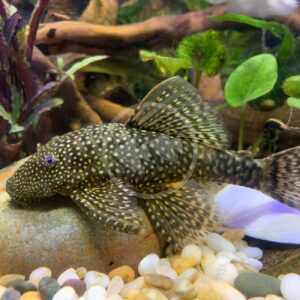
PLECOSTOMUS – BRISTLENOSE / BUSHYNOSE
Ancistrus sp.
$5.99 – $49.99Price range: $5.99 through $49.99
BARB – DENISONII / ROSELINE SHARK
Sahyadria denisonii
$9.99 – $79.99Price range: $9.99 through $79.99

MINNOW – WHITE CLOUD MOUNTAIN GOLD
Tanichthys albonubes
$5.99
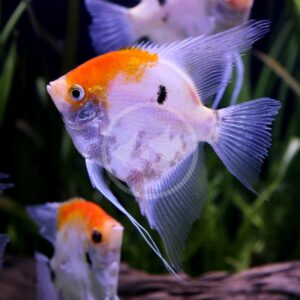
ANGELFISH – FW KOI
Pterophyllum scalare
$14.99 – $59.99Price range: $14.99 through $59.99
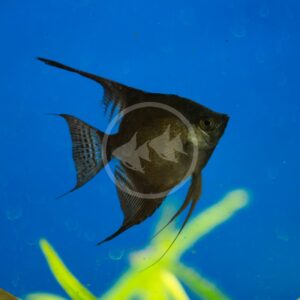
ANGELFISH – FW BLACK
Pterophyllum scalare
$6.99 – $49.99Price range: $6.99 through $49.99
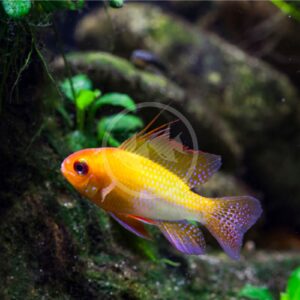
CICHLID – RAM GERMAN GOLD
Mikrogeophagus ramirezi
$5.99 – $16.99Price range: $5.99 through $16.99
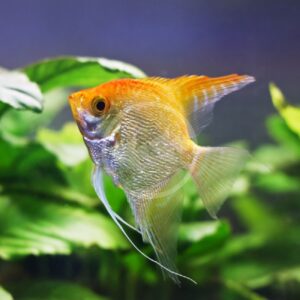
ANGELFISH – FW GOLD
Pterophyllum scalare
$9.99 – $19.99Price range: $9.99 through $19.99
